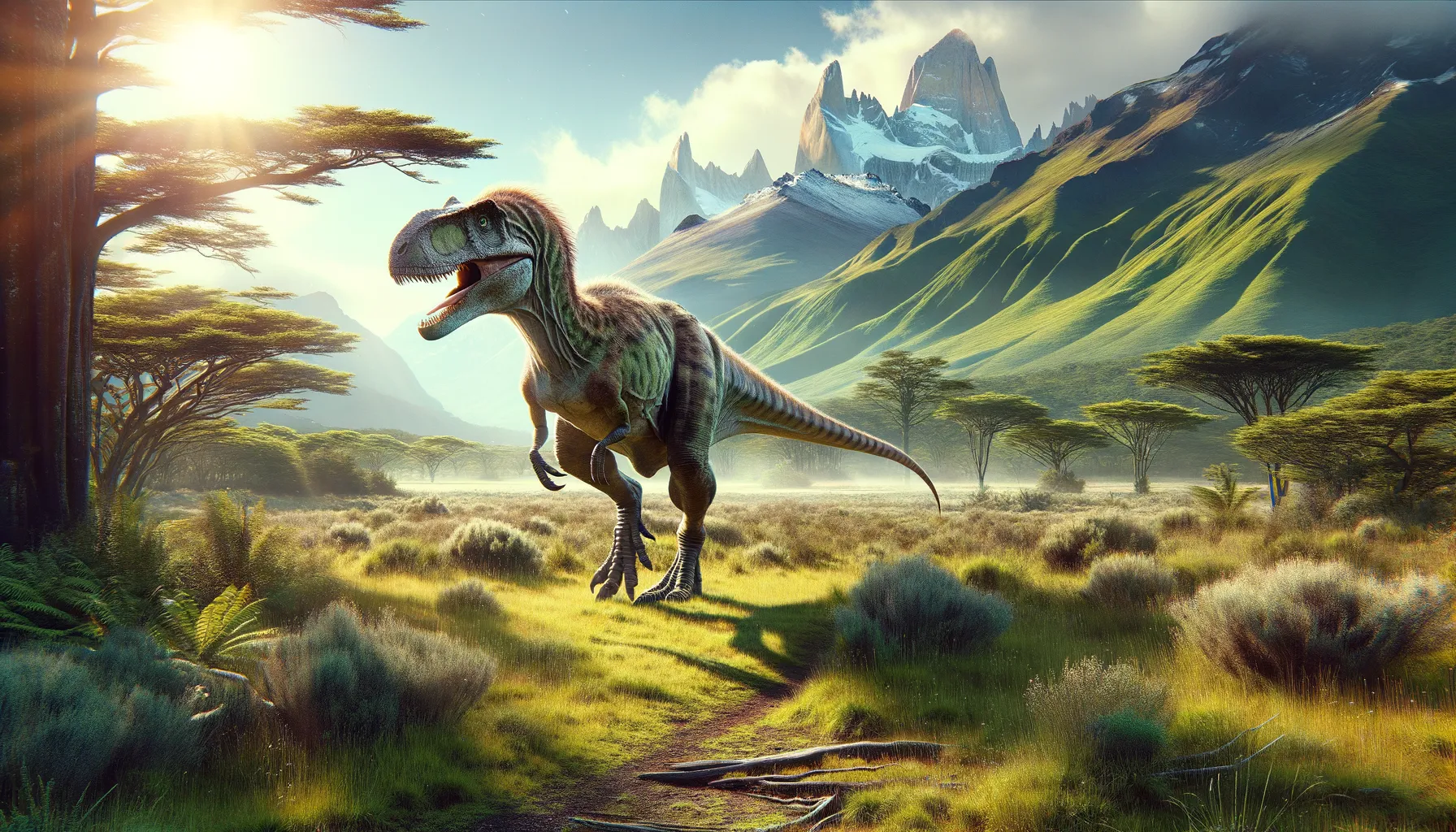
Condorraptor
Agile predator from the Jurassic past.
Period
Jurassic
Length
Approximately 5 meters (16 feet) long.
Height
Around 2 meters (6.5 feet) tall at the hips.
Weight
Approximately 350 kilograms (770 pounds).
Condorraptor was a mid-sized predator that roamed the Jurassic landscapes of what is now Argentina. With its moderate size and agile build, this dinosaur was well-adapted to its predatory lifestyle. Known from a handful of fossil specimens, Condorraptor provides valuable insights into the evolutionary history of theropods, a group that includes the well-known T. rex. Its physical adaptations suggest a life of hunting and scavenging, revealing much about the complex ecosystems of the past.
Diet
Condorraptor was carnivorous, primarily preying on smaller dinosaurs and possibly scavenging when opportunities arose. Its diet likely included a variety of reptiles and early mammals, depending on availability.
Hunting
This dinosaur probably relied on its speed and agility to catch prey, using sharp teeth and claws for a quick kill. It may have hunted alone or in small groups, utilizing stealth and sudden bursts of speed to ambush its targets.
Environmental challenges
Living in the Jurassic period, Condorraptor faced competition from other predators, requiring adaptations in hunting strategies. Climate changes would have influenced prey availability, pushing it to adapt to different food sources. Natural disasters, such as volcanic eruptions or floods, may have disrupted their habitats, necessitating rapid adjustments to new environmental conditions. Seasonal variations in temperature and precipitation would have demanded resilience in both physical endurance and resource management.
Speed
Moderate and agile for its size.
Lifespan
Estimated to live around 20 to 30 years.
First discovery
Discovered in Patagonia, Argentina in the late 1990s.
Fun Facts
- Condorraptor was a dinosaur that lived about 170 million years ago during the Middle Jurassic period.
- This dinosaur was discovered in Argentina, making it a part of the rich paleontological record of South America.
- Despite its name, Condorraptor was not related to modern birds like condors but was a theropod, meaning it was bipedal and carnivorous.
- It is estimated to have been around 16 feet long, which is roughly the length of a large car.
- Condorraptor had strong hind limbs, which suggests it was a fast runner, possibly using its speed to catch prey or evade predators.
- Fossils of Condorraptor have been found in Patagonia, an area well known for its diverse dinosaur fossils.
- Its discovery has helped scientists understand more about the diversity and evolution of early theropod dinosaurs.
Growth and Development
Condorraptor likely hatched from eggs, with juveniles growing quickly to avoid predation. As they matured, changes in diet and hunting tactics would coincide with increased size and strength. Growth rates might have varied due to resource availability, influencing their development timeline. Young Condorraptors may have exhibited different coloration or patterns for camouflage, changing as they aged.
Habitat
This dinosaur inhabited forested areas with open woodland sections, providing both cover and hunting grounds. The environment would have been rich in diverse species, offering ample prey. Condorraptor adapted to a range of terrain, including rocky outcrops and plains. Seasonal changes in the environment could have prompted migrations to follow food sources or more favorable climates.
Interaction with other species
Condorraptor likely competed with other predators, potentially interacting aggressively with rivals or cooperating with kin. Non-predatory dinosaurs, as well as mammals and reptiles, would have been both prey and competitors for resources. It may have played a role in controlling herbivore populations, influencing the ecosystem balance. Territorial behaviors could have resulted in frequent encounters with other species, sometimes leading to conflict.
Natural lifespan
In the wild, it potentially lived up to three decades.
Reproduction
Condorraptor reproduced by laying eggs in nests made of vegetation or soil. The eggs would have been cared for by one or both parents, protecting them from predators until hatching. During breeding seasons, courtship displays or calls may have occurred to attract mates. After hatching, parental involvement might include guarding or teaching offspring until they were self-sufficient.
Social behaviour
Condorraptor might have lived in loose family groups, especially during periods like mating season or when food was abundant. Solo behavior is also possible, especially when resources dwindled or to establish territory. Observations suggest potential hierarchies within groups, with leadership roles possibly established among individuals. Social interactions could include cooperative hunting or defending territories against intruders.
Fossil locations
Condorraptor fossils have been primarily found in the Patagonia region of Argentina. This area is rich with Jurassic period fossils, providing a wealth of data about its ecosystem. The discovery sites help paleontologists piece together the region's prehistoric environment. These fossils contribute to a broader understanding of theropod distribution across ancient Gondwana.
